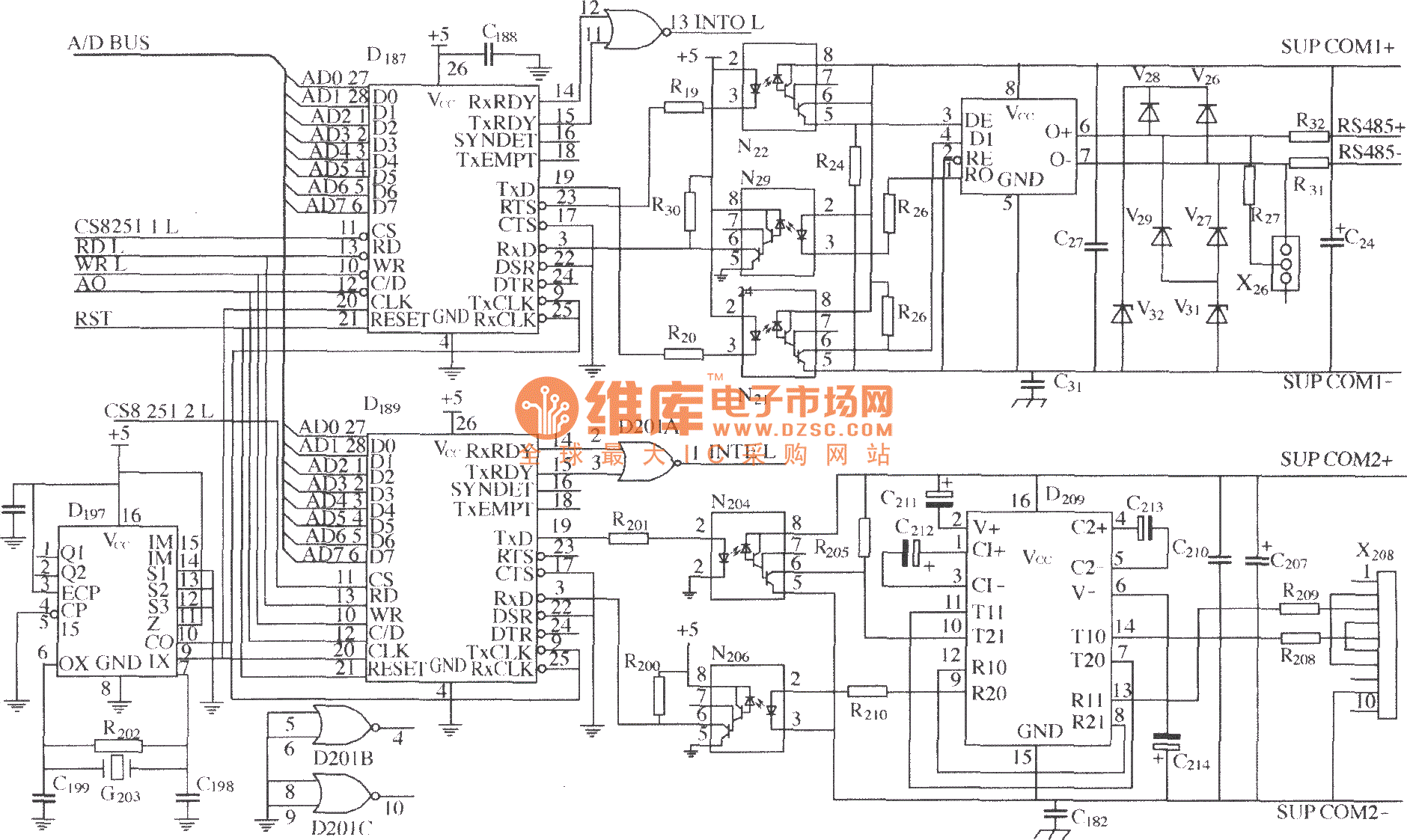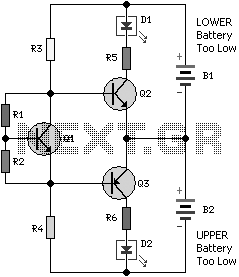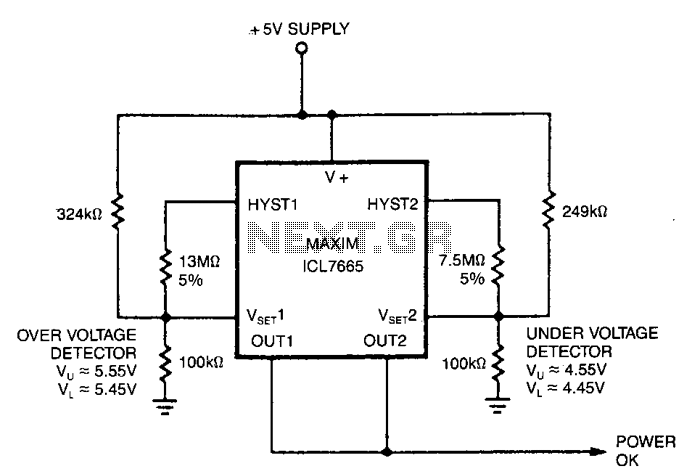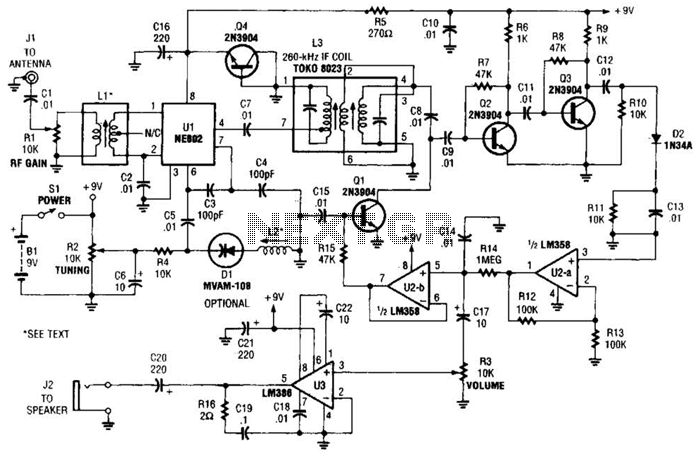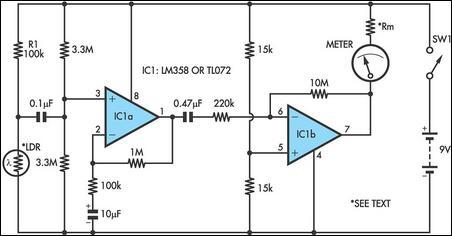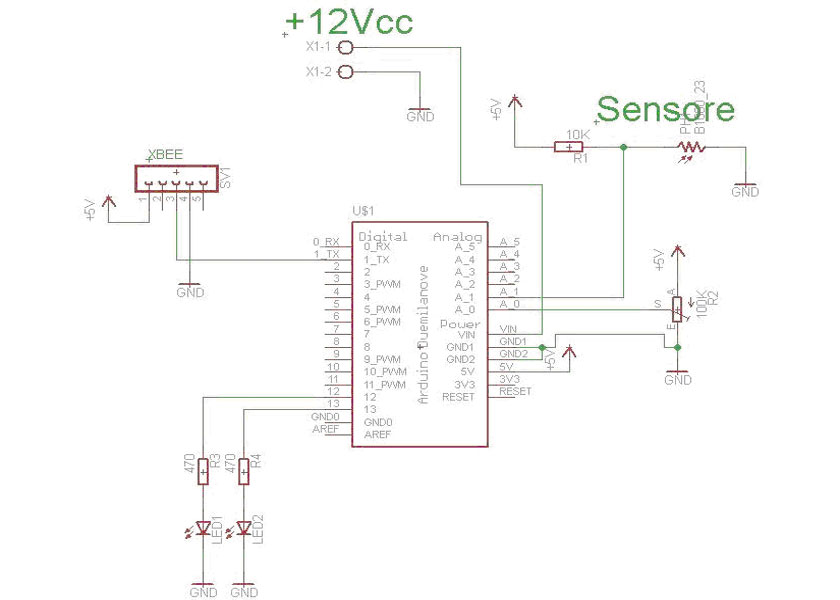
Shortwave Monitor
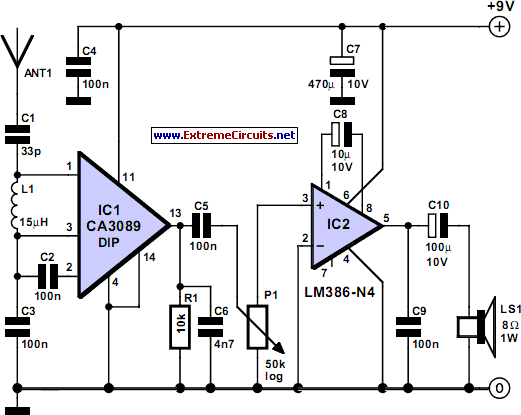
This broadband AM receiver allows monitoring of the shortwave radio band. The circuit is intentionally designed for low selectivity and exhibits maximum sensitivity in the frequency range of 6 to 20 MHz, which encompasses most shortwave broadcast stations. In this setup, the station with the strongest signal is the easiest to receive. Notably, the signal strength of stations within this band fluctuates significantly due to the ionosphere's ability to reflect radio signals. This atmospheric layer is in constant motion, resulting in continuous variations in received signal strengths from different directions. During prototype testing, stations such as Radio Netherlands World Service, Radio Finland, and Deutsche Welle alternated as the strongest signals at regular intervals. This receiver not only provides an excellent indication of the numerous stations available in the shortwave band but also serves as a valuable tool for monitoring the ionosphere's condition. The circuit primarily consists of an RF amplifier and an AF amplifier. High-frequency amplification is achieved through the IF stage of a CA3089 integrated circuit (IC), which is typically used in FM receivers; however, the FM section is not utilized in this application. The internal level detector generates a signal strong enough to drive an audio amplifier directly. An LM386 IC is employed for this purpose, capable of directly driving an 8-ohm loudspeaker or headphones without difficulty. The power supply voltage is set at 9 V, and due to the low power consumption, a 9-V battery is suitable. Additionally, the circuit can operate down to approximately 5.5 V, extending battery life. The antenna requires some experimentation; reasonable results were achieved using a 50 cm length of wire, while a wire length between 5 to 15 meters is expected to yield even better performance at these frequencies.
This broadband AM receiver circuit is designed to effectively capture and amplify shortwave radio signals, making it an ideal tool for enthusiasts and researchers interested in radio communications and ionospheric conditions. The selection of the CA3089 IC for high-frequency amplification allows for efficient signal processing, as it is engineered to handle varying signal strengths and provide a clear audio output. The LM386 audio amplifier is a robust choice for driving speakers or headphones, ensuring that the audio output remains clear and loud enough for effective monitoring.
For optimal performance, the antenna must be tailored to the specific environment and frequency of interest. Experimentation with different lengths and types of wire can significantly enhance reception quality. The use of a longer wire antenna, ideally in the range of 5 to 15 meters, is recommended to improve signal capture, as longer antennas can better resonate with lower frequency signals present in the shortwave band.
The power supply design, utilizing a standard 9-V battery, ensures portability and ease of use, making the receiver suitable for both indoor and outdoor applications. The circuit's ability to function at lower voltages enhances its usability in various scenarios, allowing for extended operation without frequent battery replacements. Overall, this broadband AM receiver circuit represents a practical and effective solution for monitoring shortwave broadcasts and studying ionospheric phenomena.This broadband AM receiver enables you to monitor` the shortwave radio band. The circuit has been deliberately designed to have low selectivity and is most sensitive in the range from 6 to 20 MHz. This frequency range contains most of the shortwave broadcast stations. In this configuration, whichever station has the strongest signal will be the ea siest to hear. An interesting fact is that the signal strength of stations in this band changes quite a lot. This is because the ionosphere reflects the radio signals. Because this layer of the atmosphere is in constant motion, the received signal strengths from different directions are subject to continuous variation. During testing of our prototype Radio Netherlands World Service, Radio Finland and Deutsche Welle alternated as the strongest station at regular intervals.
This receiver not only gives a good indication of the myriad of stations on offer in the short-wave band but is also an excellent tool for monitoring the state of the ionosphere. The circuit actually consists of no more than an RF and an AF amplifier. The high-frequency amplification is carried out by the IF stage of a CA3089. This IC is actually intended for FM receivers, but the FM section is not used here. The internal level detector provides a signal of sufficient strength to drive an audio amplifier directly.
An LM386 was selected for this task. This IC can directly drive an 8- loudspeaker or headphones without any difficulty. The power supply voltage is 9 V. Because of the modest power consumption a 9-V battery is very suitable. In addition, the circuit will work down to a voltage of about 5. 5 V, so that the battery life will be extra long. The antenna will require a little experimentation. We obtained reasonable results with a piece of wire 50 cm long. A length of wire in the range of 5 to 15 meters should provide even better results at these frequencies. 🔗 External reference
This broadband AM receiver circuit is designed to effectively capture and amplify shortwave radio signals, making it an ideal tool for enthusiasts and researchers interested in radio communications and ionospheric conditions. The selection of the CA3089 IC for high-frequency amplification allows for efficient signal processing, as it is engineered to handle varying signal strengths and provide a clear audio output. The LM386 audio amplifier is a robust choice for driving speakers or headphones, ensuring that the audio output remains clear and loud enough for effective monitoring.
For optimal performance, the antenna must be tailored to the specific environment and frequency of interest. Experimentation with different lengths and types of wire can significantly enhance reception quality. The use of a longer wire antenna, ideally in the range of 5 to 15 meters, is recommended to improve signal capture, as longer antennas can better resonate with lower frequency signals present in the shortwave band.
The power supply design, utilizing a standard 9-V battery, ensures portability and ease of use, making the receiver suitable for both indoor and outdoor applications. The circuit's ability to function at lower voltages enhances its usability in various scenarios, allowing for extended operation without frequent battery replacements. Overall, this broadband AM receiver circuit represents a practical and effective solution for monitoring shortwave broadcasts and studying ionospheric phenomena.This broadband AM receiver enables you to monitor` the shortwave radio band. The circuit has been deliberately designed to have low selectivity and is most sensitive in the range from 6 to 20 MHz. This frequency range contains most of the shortwave broadcast stations. In this configuration, whichever station has the strongest signal will be the ea siest to hear. An interesting fact is that the signal strength of stations in this band changes quite a lot. This is because the ionosphere reflects the radio signals. Because this layer of the atmosphere is in constant motion, the received signal strengths from different directions are subject to continuous variation. During testing of our prototype Radio Netherlands World Service, Radio Finland and Deutsche Welle alternated as the strongest station at regular intervals.
This receiver not only gives a good indication of the myriad of stations on offer in the short-wave band but is also an excellent tool for monitoring the state of the ionosphere. The circuit actually consists of no more than an RF and an AF amplifier. The high-frequency amplification is carried out by the IF stage of a CA3089. This IC is actually intended for FM receivers, but the FM section is not used here. The internal level detector provides a signal of sufficient strength to drive an audio amplifier directly.
An LM386 was selected for this task. This IC can directly drive an 8- loudspeaker or headphones without any difficulty. The power supply voltage is 9 V. Because of the modest power consumption a 9-V battery is very suitable. In addition, the circuit will work down to a voltage of about 5. 5 V, so that the battery life will be extra long. The antenna will require a little experimentation. We obtained reasonable results with a piece of wire 50 cm long. A length of wire in the range of 5 to 15 meters should provide even better results at these frequencies. 🔗 External reference
